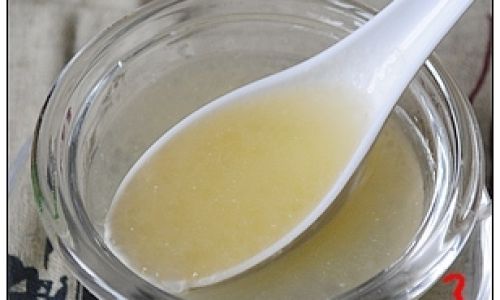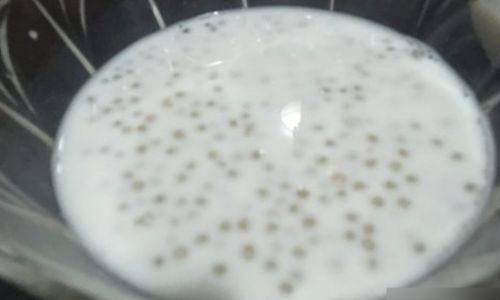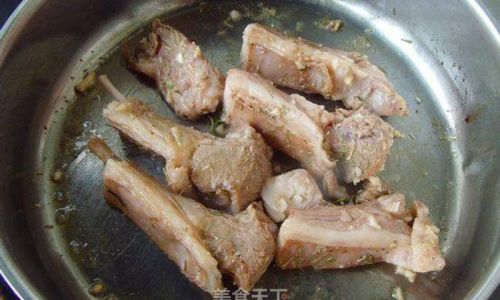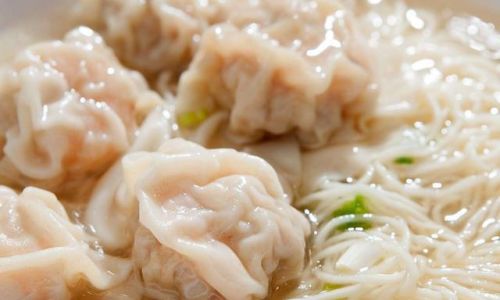Introduction
In the vast culinary landscape, there are countless dishes that bring warmth and comfort to our hearts and souls. Among these, desserts occupy a special place, offering a sweet escape from the mundane and a delightful conclusion to any meal. One such dessert that has garnered widespread popularity across various cultures is Tapioca Milk. This creamy, smooth, and slightly chewy treat is not only delightful to taste but also relatively easy to prepare. Whether you’re a seasoned chef or a novice in the kitchen, learning how to cook Tapioca Milk can be a rewarding experience. This guide aims to provide a comprehensive understanding of the process, ensuring that you can whip up a perfect batch every time.
Understanding Tapioca
Before diving into the recipe, it’s crucial to understand what tapioca is. Tapioca is derived from the cassava root, a starchy tuberous plant native to South America. The root is processed to extract its starch, which is then processed into small, pearl-like balls known as tapioca pearls. These pearls are gluten-free, making them an excellent option for those with gluten sensitivities or celiac disease. Tapioca pearls come in various sizes, ranging from tiny to large, each offering a unique texture when cooked.
Selecting Ingredients

The key to a successful Tapioca Milk lies in the quality of its ingredients. Here’s a breakdown of what you’ll need:
-
Tapioca Pearls: Choose medium-sized pearls for a balanced chewy texture. Larger pearls can be time-consuming to cook through, while smaller ones might become too soft.
-
Milk: Full-fat milk is recommended for a richer, creamier texture. However, you can use low-fat milk, almond milk, soy milk, or any other dairy alternative based on your preference.
-
Sugar: Granulated sugar is the traditional sweetener, but you can experiment with brown sugar, honey, maple syrup, or agave nectar for a unique flavor profile.
-
Vanilla Extract: For a classic, aromatic touch. You can also use vanilla beans for an even more luxurious flavor.
-
Salt: A pinch of salt enhances the sweetness and brings out the flavors.
-
Water: For boiling the tapioca pearls.
Equipment

To make Tapioca Milk, you’ll need:
- A large pot for boiling water and tapioca pearls.
- A strainer or sieve for draining the cooked pearls.
- A medium saucepan for mixing and heating the milk and sugar.
- A whisk or spoon for stirring.
- Measuring cups and spoons.
- A serving bowl or individual bowls.
Step-by-Step Recipe
Now, let’s dive into the detailed recipe for cooking Tapioca Milk.
Step 1: Preparing the Tapioca Pearls
-
Boiling Water: Fill a large pot with enough water to fully submerge the tapioca pearls and bring it to a rolling boil. The ratio of water to tapioca is crucial; generally, use about 6 cups of water for every 1/2 cup of tapioca pearls.
-
Adding Tapioca: Once the water is boiling, carefully add the tapioca pearls. Stir immediately to prevent them from sticking together or to the bottom of the pot.
-
Cooking Time: Reduce the heat to medium-high and cook the tapioca pearls, stirring occasionally, until they become translucent with a slight white dot in the center. This can take anywhere from 15 to 25 minutes, depending on the size of the pearls.
-
Checking Doneness: To check if the tapioca is cooked, remove a few pearls from the pot and let them cool slightly. Cut one open; if it’s mostly translucent with a small white core, it’s ready. If the core is still large, continue cooking for a few more minutes.

-
Draining: Once cooked, turn off the heat and let the tapioca pearls sit in the hot water for about 5 minutes to continue absorbing moisture. Then, drain them using a strainer and rinse with cold water to stop the cooking process and prevent them from becoming too mushy.
Step 2: Preparing the Milk Mixture
-
Heating Milk: In a medium saucepan, pour in the desired amount of milk (usually around 2-3 cups for a standard batch). Heat the milk over medium heat, stirring occasionally to prevent scorching.
-
Adding Sugar: Once the milk is warm, add sugar to taste. Start with about 1/4 cup of granulated sugar and adjust according to your preference. Stir until the sugar is fully dissolved.
-
Flavoring: Add a few drops of vanilla extract and a pinch of salt. Stir to combine. If using vanilla beans, scrape the seeds from one bean and add them to the milk.
-
Simmering: Allow the milk mixture to simmer gently for about 5 minutes, stirring occasionally, to let the flavors meld together.
Step 3: Combining Tapioca and Milk
-
Adding Tapioca: Once the milk mixture is ready, add the drained and rinsed tapioca pearls to the saucepan. Stir gently to combine.

-
Heating Through: Cook the mixture over low heat for another 2-3 minutes, stirring constantly, until the tapioca pearls are heated through and the mixture is well blended. Be careful not to overheat, as this can cause the milk to curdle.
-
Taste Adjustment: Taste the Tapioca Milk and adjust the sweetness if necessary. You can add more sugar or a splash of vanilla extract for extra flavor.
Step 4: Serving
-
Cooling: Remove the Tapioca Milk from heat and let it cool slightly. It can be served warm, at room temperature, or chilled.
-
Chilling (Optional): For a refreshing treat, pour the Tapioca Milk into a bowl or container and refrigerate for about 1-2 hours until chilled.
-
Garnishing: Before serving, you can garnish the Tapioca Milk with a sprinkle of ground cinnamon, a few drops of vanilla extract, or a dollop of whipped cream for added indulgence.
Troubleshooting Tips
- Sticky Tapioca: If your tapioca pearls become sticky during cooking, ensure you rinse them thoroughly with cold water after draining.
- Lumpy Milk: To avoid lumps in the milk mixture, make sure the sugar is fully dissolved before adding the vanilla extract and salt.
- Overcooked Tapioca: If the tapioca pearls become too soft, they can be rinsed in ice water to firm them up slightly.
Storage

Leftover Tapioca Milk can be stored in an airtight container in the refrigerator for up to 2 days. Reheat gently before serving, stirring occasionally to prevent the milk from separating or scorching.
Conclusion
Cooking Tapioca Milk may seem like a simple task, but mastering the art requires attention to detail and a bit of practice. By following this comprehensive guide, you’ll be able to create a batch of creamy, chewy, and delicious Tapioca Milk that will delight your taste buds and impress your guests. Whether you enjoy it as a comforting dessert after a meal or a refreshing snack on a hot day, Tapioca Milk is a versatile treat that’s sure to become a staple in your kitchen. Happy cooking!




0 comments